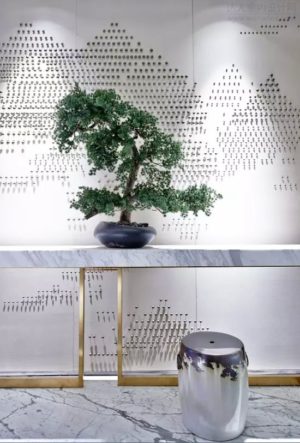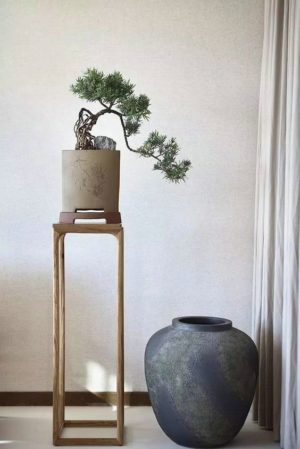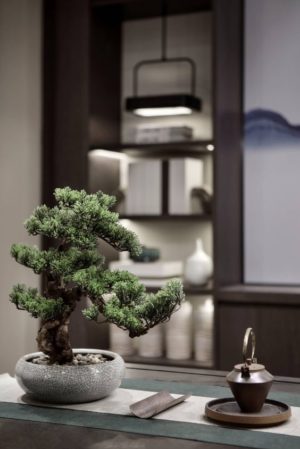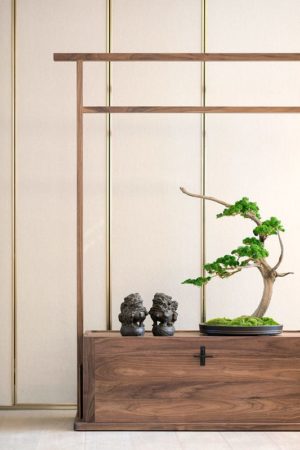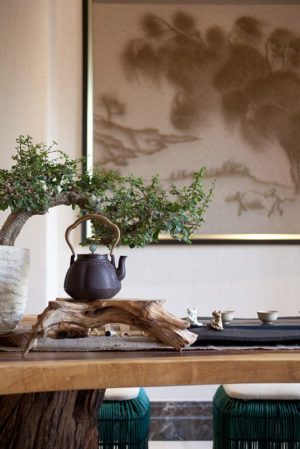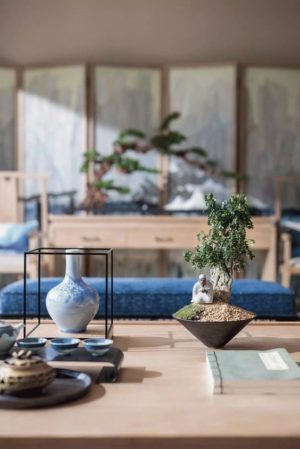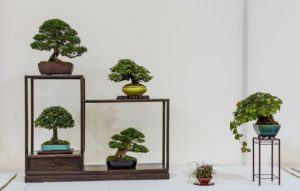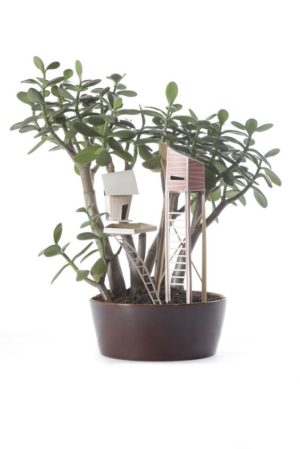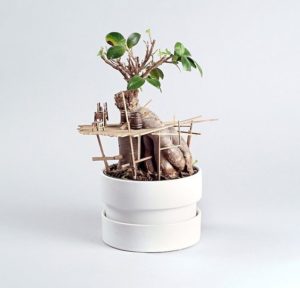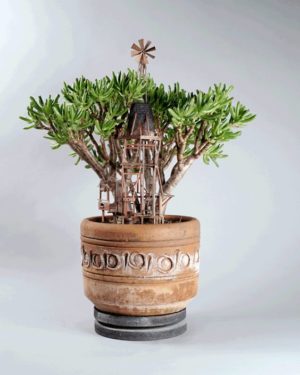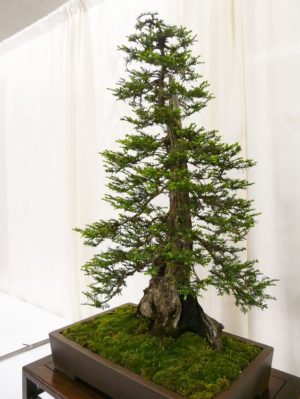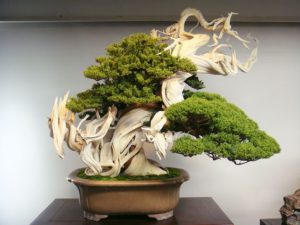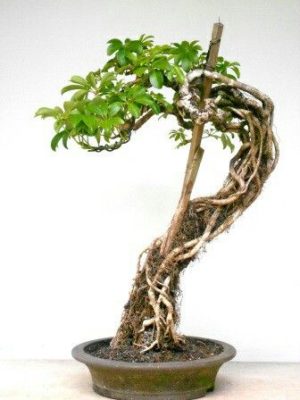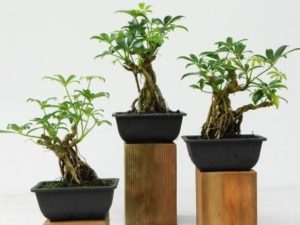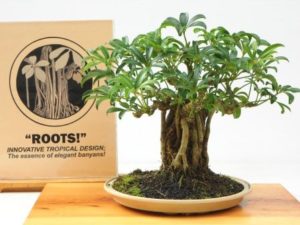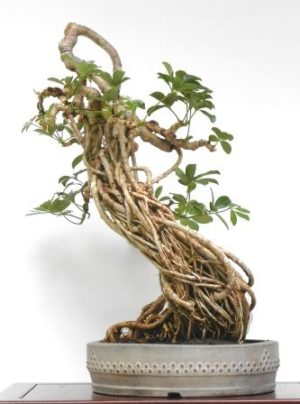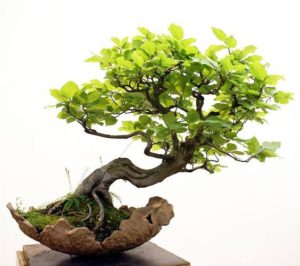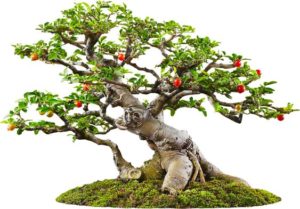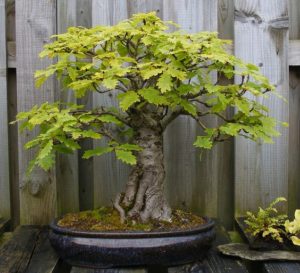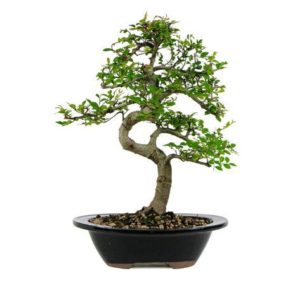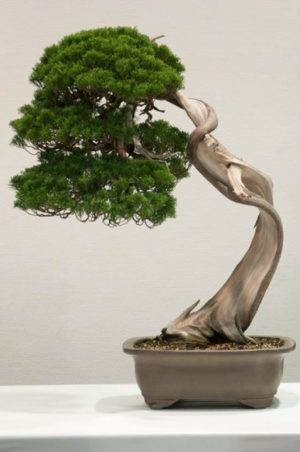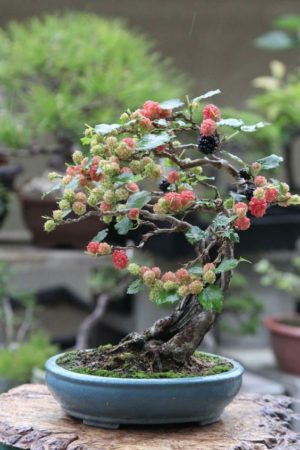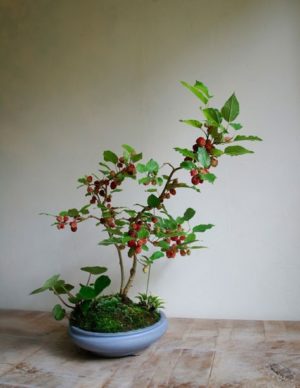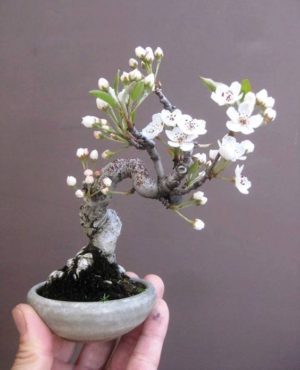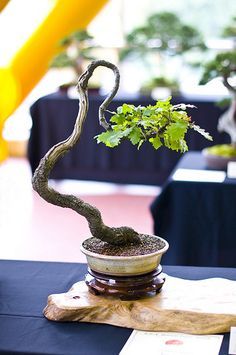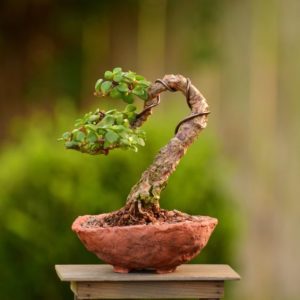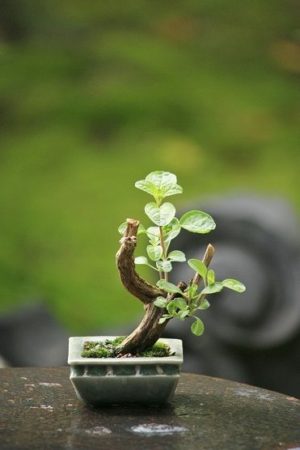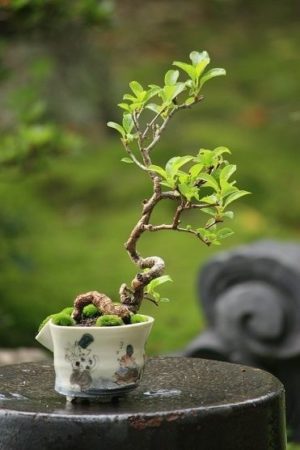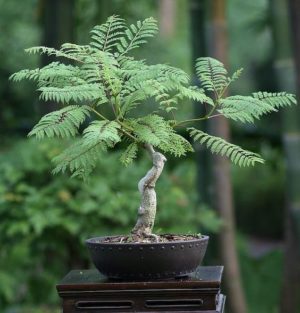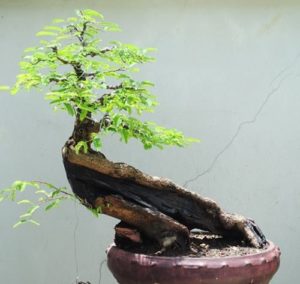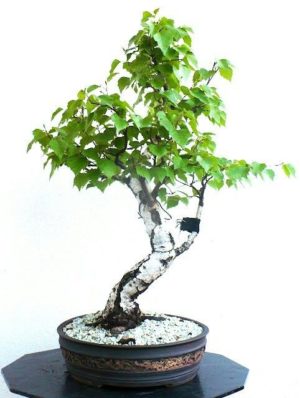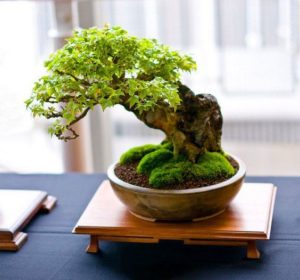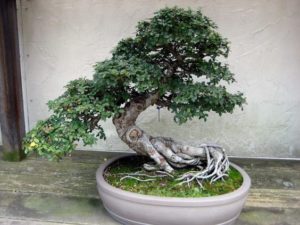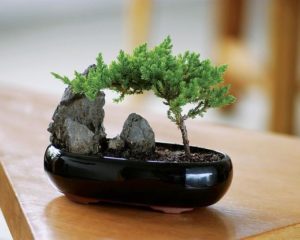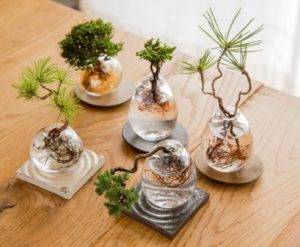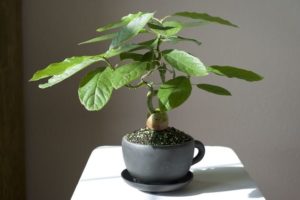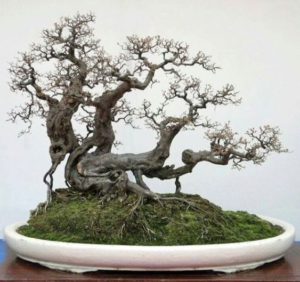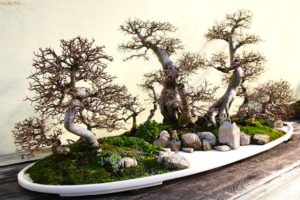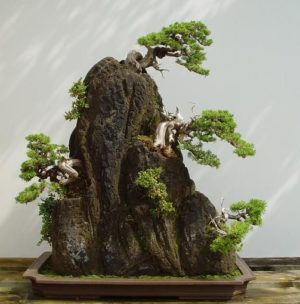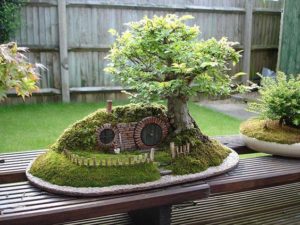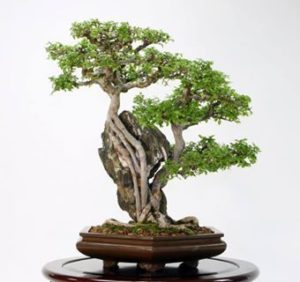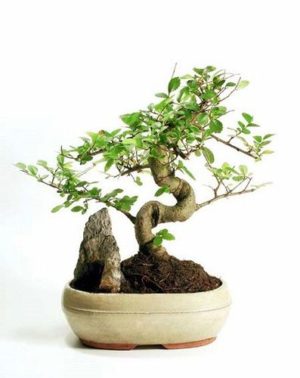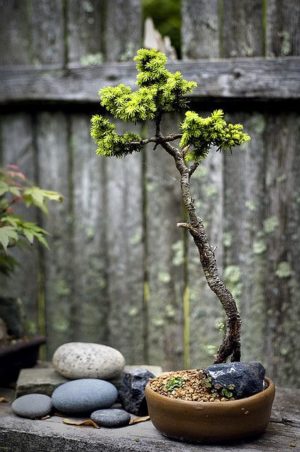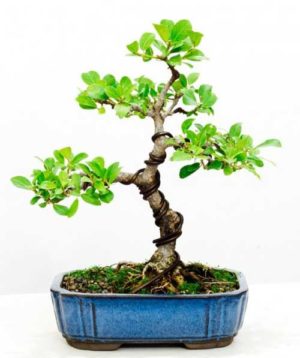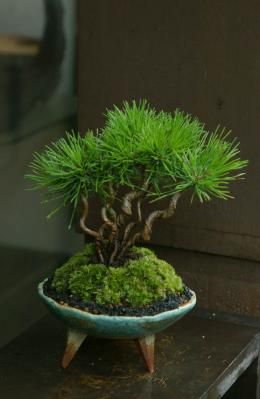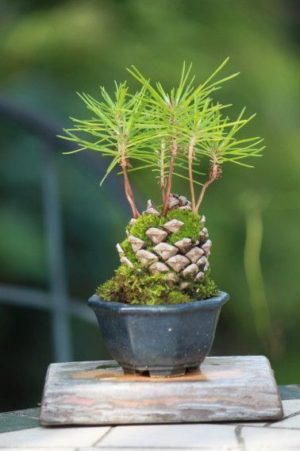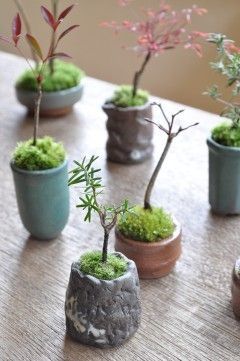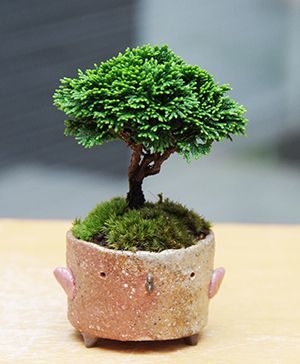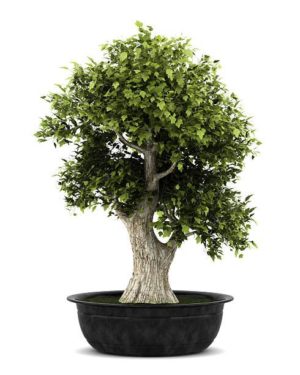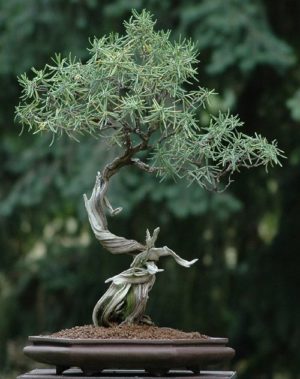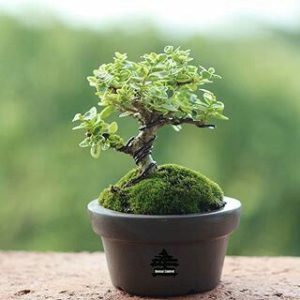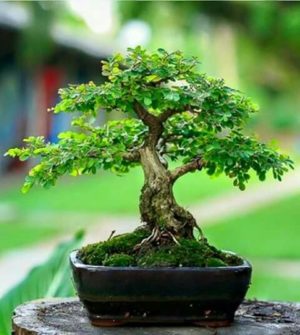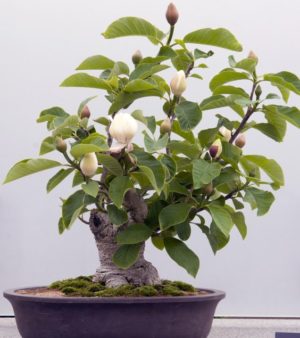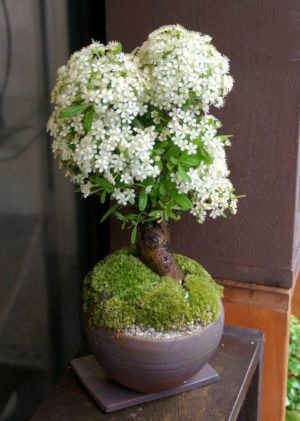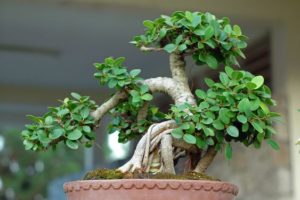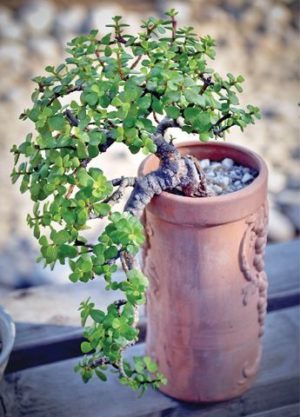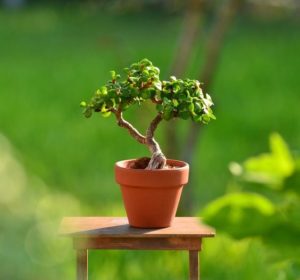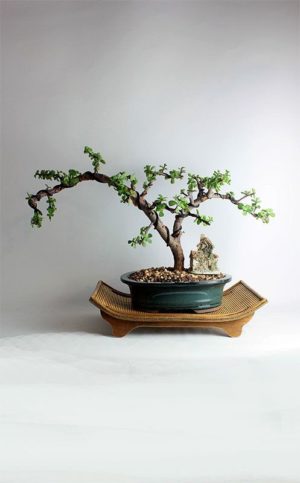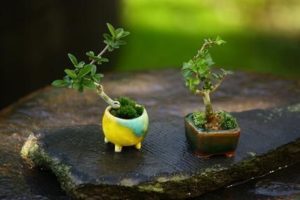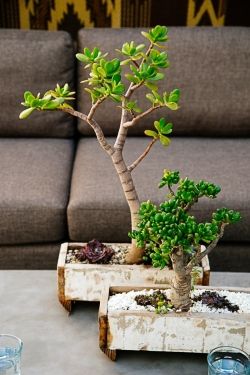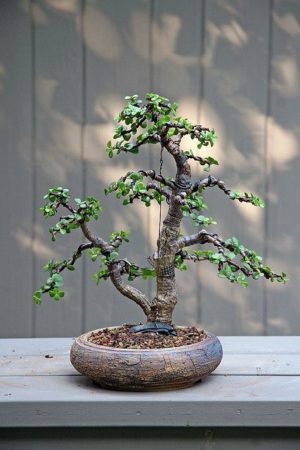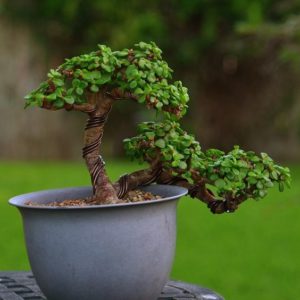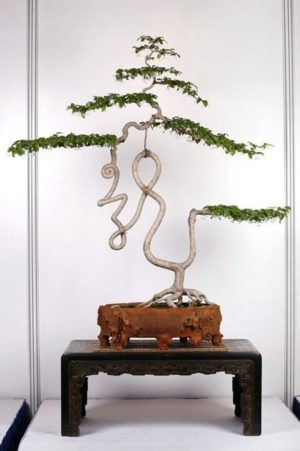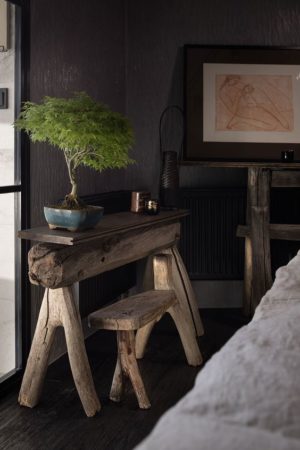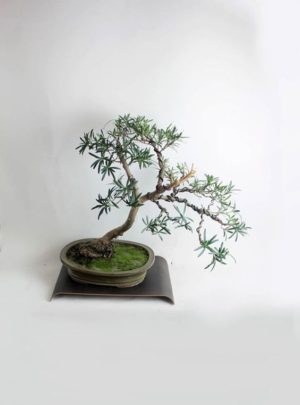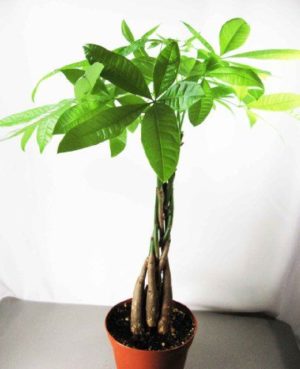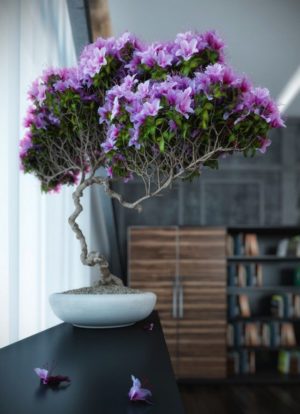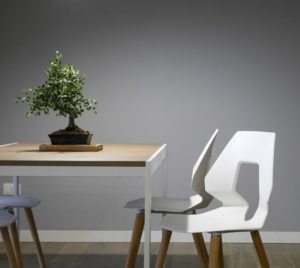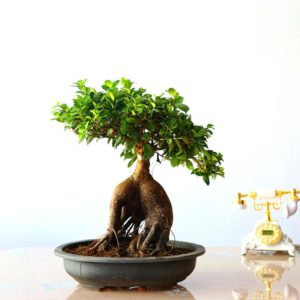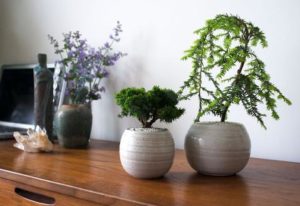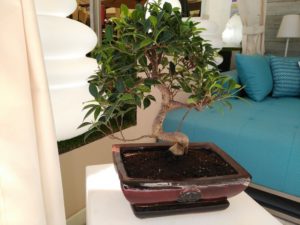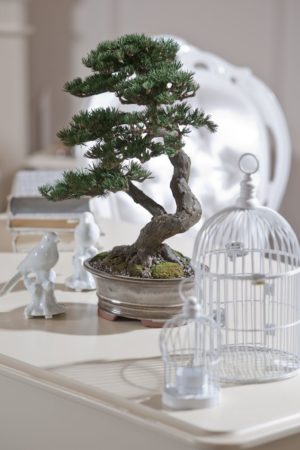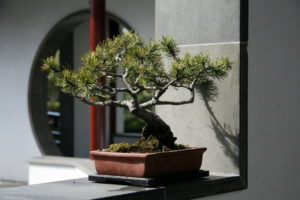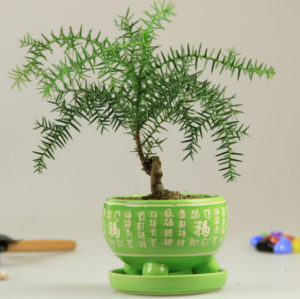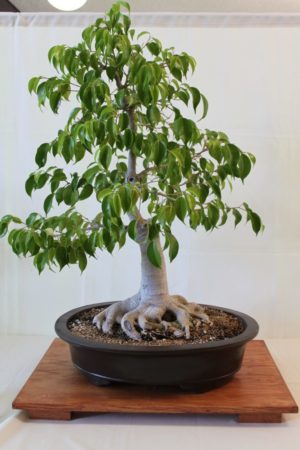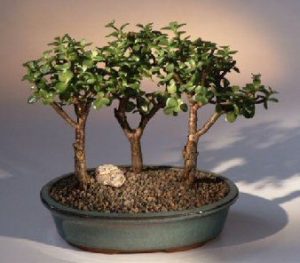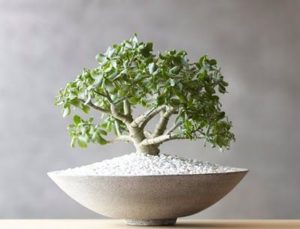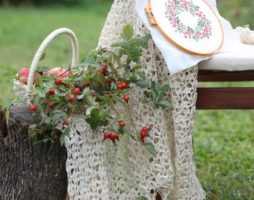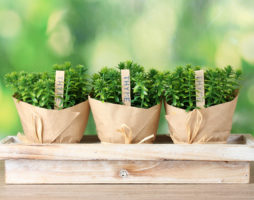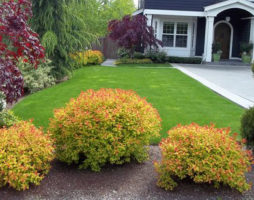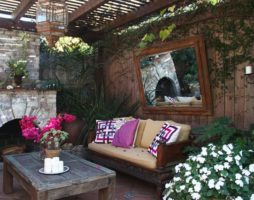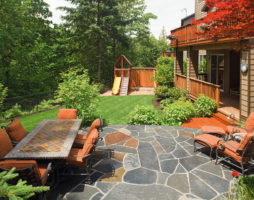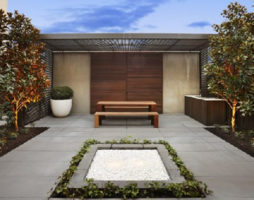The art of growing and caring for a bonsai tree is one of the oldest techniques for growing ornamental plants that originated millennia ago. True, over the past centuries, the technique, and the very principles of creating miniature trees, have changed extremely much - but this only contributed to an increase in the popularity of the technique. The technology of growing bonsai is quite simple, it does not require special efforts and financial investments, but it requires extraordinary patience and takes a lot of time.
- From China to Japan
- From Japan to Europe
- Bonsai sizes
- Fundamentals of Bonsai Growing Technique
- How to grow a bonsai tree with a beautiful crown
- Overlapping or pulling?
- Formation of thick branches
- Ways to form a pattern of branches
- More specifically about methods
- How to grow bonsai from seeds at home
- Pot and soil
- Bonsai care features
- Conclusion
- Photo gallery - bonsai
- Video
From China to Japan
“Although the main development of the science of how to grow a bonsai tree was in Japan, it originated not there, but in China more than two thousand years ago”
According to popular belief, bonsai are simply dwarf trees grown indoors. Reality, as it usually happens, is quite far from the usual ideas about it: bonsai is not just creativity and even real art, it is a whole philosophy! Following the main principles of which allows you to grow greatly reduced, but real copies of ordinary tall trees.

Bonsai is a real art
Although the main development of the science of how to grow a bonsai tree was in Japan, it originated not there, but in China more than two thousand years ago. Nevertheless, it was the Japanese who, in just the last six centuries, have managed to improve and systematize the cultivation of miniature plants, elegant and occupying a minimum of space in their homes. It is thanks to these qualities that bonsai trees have become extremely popular in the megacities of the 20th and present, 21st centuries.
back to index ↑From Japan to Europe
The relatively complex Japanese technology for growing and caring for a bonsai tree was adapted by Europeans to suit their capabilities, and today anyone can grow their own micro-tree. Moreover, the tree, although miniature, is the most real - bonsai has a trunk and a developed root system, leafy branches, and a tendency to seasonal leaf fall. It also blooms and bears fruit in its time; but, unfortunately, it has a much shorter lifespan.

Anyone can grow a micro-tree
Bonsai sizes
In accordance with the size of an adult plant, bonsai is usually divided into several categories:
- tiny (micro) - plants less than 5 cm high;
- miniature - trees from 5 to 15 cm high;
- small (small) - not higher than 0.3 m;
- medium - plants can reach a height of 0.6 m;
- large - the height of miniature trees is comparable to the height of common indoor plants, but does not exceed 1.2 m.
The last two types of bonsai are considered relatively large plants and are quite difficult to care for, micro-trees are also not easy to grow. That is why miniature and small trees have gained the greatest popularity - exotic for European everyday life, but easy to maintain. It is they who perfectly display the beauty of the plant world, possessing a fragile elegance and ideally fitting into any interior.
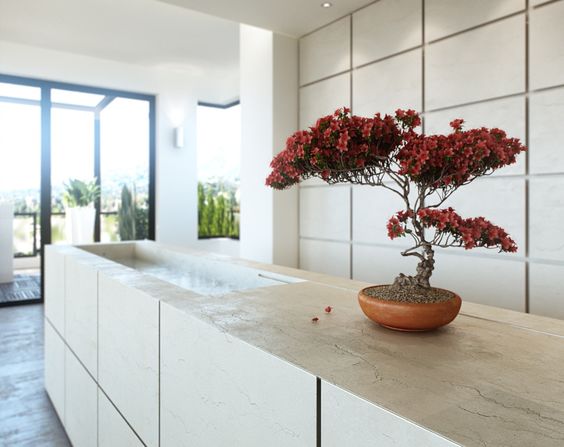
Bonsai will fit perfectly into any interior
Fundamentals of Bonsai Growing Technique
The process of growing bonsai from seeds at home can be quite lengthy and in any case takes years. First of all, it all depends on the seeds - in some breeds they germinate for several years, and only with careful observance of certain climatic conditions. The most unpretentious and suitable for beginner bonsai trees are generally recognized as pines and ficuses - their seeds are able to germinate in the most "Spartan" conditions.
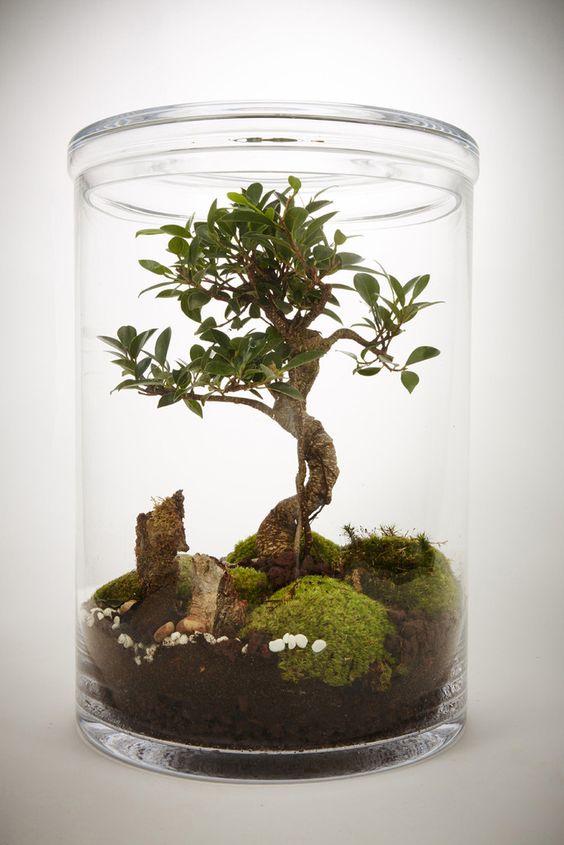
Ficus bonsai is suitable for beginners
Growing and caring for a young sprout of a bonsai tree from seeds is the most important stage in the formation of a plant. During this period, it must be regularly aired and watered, and after the appearance of the fourth true leaf, transplanted into a larger pot. After a couple of months, the tree can already begin to be fed with mineral fertilizers. In winter, the plant has a dormant period, so feeding and watering should be limited to a minimum, the best place for a bonsai pot at this time is the windowsill.
An adult bonsai tree needs constant light and humidity adjustments. For this, if necessary, additional lighting is arranged and foliage spraying is applied.
back to index ↑How to grow a bonsai tree with a beautiful crown
Before growing a bonsai tree from seeds, it is advisable to think about the formation of the crown of the tree. To fix the branches of a tree in the desired position, an ordinary wire is used - it can be applied directly to the branches or play the role of a tensioner. The specific method of application is determined in each case individually, but in general both of them are equivalent.
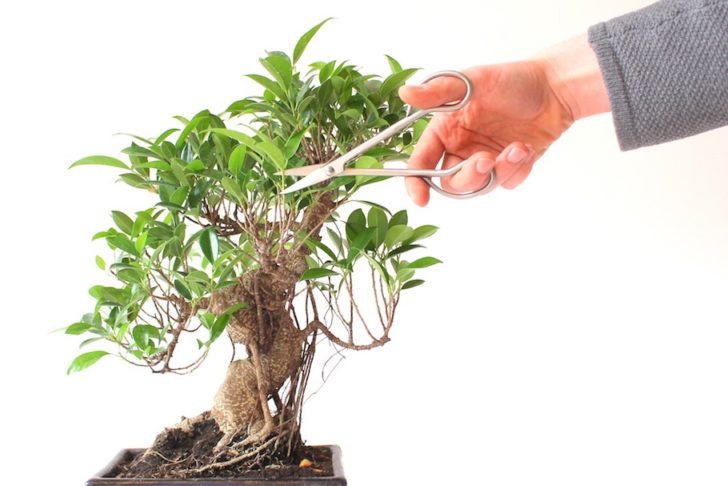
Pruning for crown formation
The most difficult and time-consuming operation when growing bonsai from seeds at home is the formation of the crown of coniferous trees: for the correct execution of this operation, it is necessary to fix each branch without exception with a wire. Including - and the apical shoot. With hardwoods, the situation is much simpler - to give the crown skeleton the desired pattern, you can use simple pruning, using wire in the most extreme cases.

The scheme of forming the crown of a tree with wire
Overlapping or pulling?
How to grow bonsai with a beautiful exterior at home?
On smooth-barked trees (elms, for example, lindens, beech), the wire must be tied very carefully and for a short time, otherwise it will leave traces of it or even grow into the wood. In plants with a rough, rough bark, damage heals quickly, but it should not be brought to the point of ingrowth of the wire - such scars are almost impossible to eliminate. The wire on the branches should be applied as freely as possible and regularly check the ease of its movement.
At home, with proper care, the shape of the bonsai crown stabilizes after about three months, and after this period the wire can be removed. Since the young bonsai is a very fragile “construction”, the wire should not be untwisted, but cut with wire cutters or side cutters.
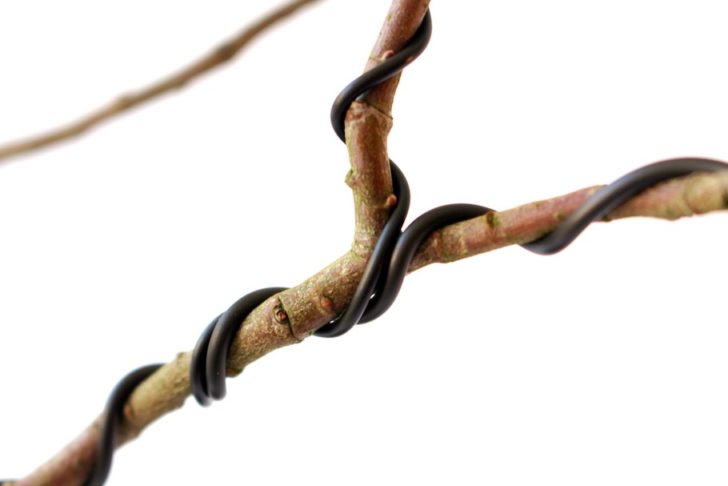
The wire on the branches must be applied as freely as possible
In the absence of at least a minimum experience in tying guy wires to branches, it is best to first practice on outdoor plants of a suitable size.The best garter wire is copper-plated aluminum sold in specialized stores; such wire can also be “obtained” from people involved in the maintenance and repair of electric motors or transformers. The thickness of the wire should not be more than a third of the thickness of the branch being tied.
Steel wire should not be used - it rusts very quickly and is too stiff. Proper care of a bonsai tree requires tying the branches in such a way that their crossing is excluded - this is considered unacceptable. Naturally, such plants with a crown not yet formed are not put on display - this is considered bad form.
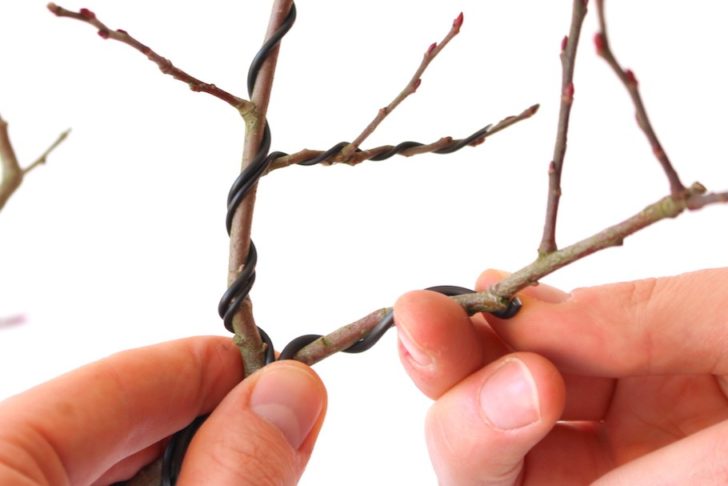
Avoid crossing branches
Formation of thick branches
How to grow bonsai at home with a canonical crown, if tying up wire braces does not make it possible to give the branch the right direction? In such situations, you have to use special metal brackets. Their condition also needs to be constantly monitored and rearranged when there is a danger of growing into the wood. This technique is necessary when changing the direction of growth of powerful, already thick enough branches.
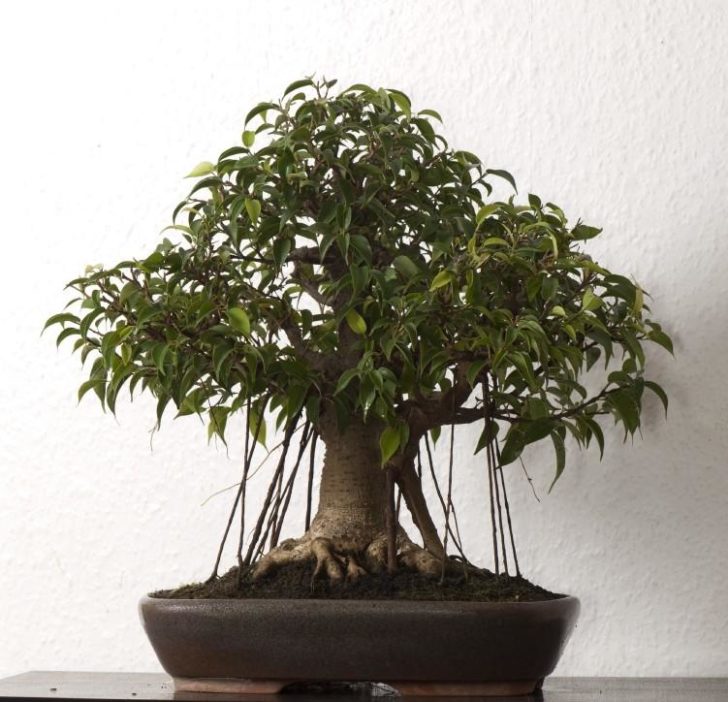
Staples for changing the direction of growth of branches
When planning one or another method of crown formation, it should be borne in mind that although wire pulling is the simplest method, it only allows you to set the desired direction of branch growth. Its shape cannot be changed in this way. To change the shape, tying a sufficiently thick wire along the entire branch should be used.
back to index ↑Ways to form a pattern of branches
Care and cultivation from seeds of a real bonsai lasts for many years, and the plant at the same time acquires a completely natural look of an old tree - however, not everyone has enough time and patience for this. The solution to this problem is quite simple - it is quite possible to age a young tree artificially, using simple agricultural practices. The easiest of these is the removal of bark from areas of wood. The most primitive tool is used for this operation - a sharp knife or wire cutters. And at least minimal practical experience, of course.
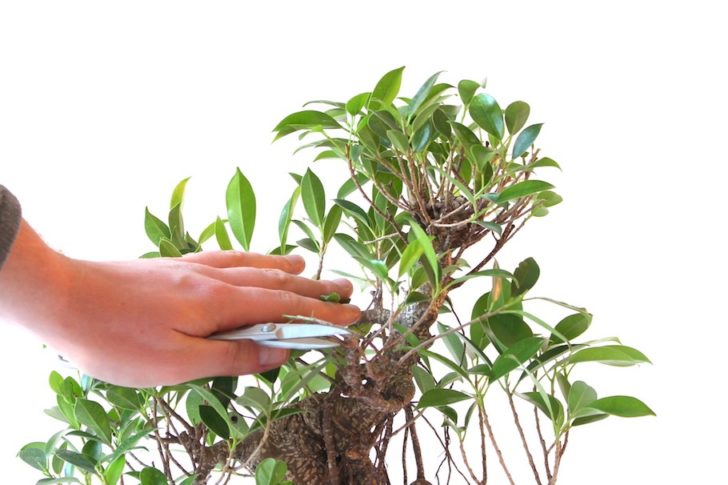
A young tree can be aged artificially
The main condition is that it is impossible to completely remove the cover from the branches, which must remain alive: a thin strip of bark must pass along the entire branch. It will serve as a transport artery for sap flow and lead to the very top of the tree. Branches that are planned to be made dead and dry can be completely cleaned of the bark, it is not forbidden to process the exposed wood with a knife - but this should be done carefully. So how to grow artificially aged bonsai from seeds at home?
back to index ↑More specifically about methods
“It is recommended to pay attention to the pattern of natural growth of branches - although when grown from seeds at home, bonsai is forcibly formed, it should look as natural as possible”
The described techniques require the performer to have certain skills, therefore, in the absence of experience, it is better to first practice on natural plants. At the same time, it is recommended to pay attention to the pattern of natural growth of branches - although when grown from seeds at home, bonsai is forcibly formed, it should look as natural as possible.
How to grow artificially aged bonsai from seeds at home? A suitable composition can be planned by observing trees that have survived a lightning strike or a drought, a windbreak can also suggest a good idea.
In the traditional art of growing and caring for a bonsai tree, the above techniques for forming a pattern of a branch and trunk are called sharimiki and sabamiki.
Sharimiki
This is the name of the method of artificial aging of wood by removing large areas of bark and subsequent processing of a bare branch with a knife. Beginners should not use this technique to work with rare and expensive plants - the result can lead to large financial losses. Experience is always better to gain on the processing of plants easier.
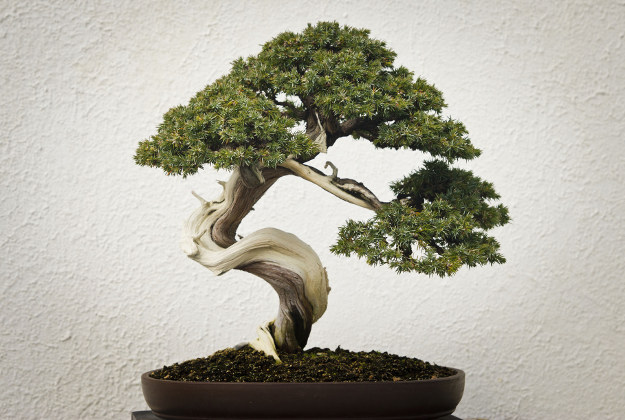
Sharimika Bonsai
sabamiki
This technique allows you to form plants with a trunk split into several parts, simulating a lightning strike. Such plants are very rarely whole, but with the proper approach they look very impressive and expressive. It is difficult to use lightning at home, so the formation of a split is carried out by means of wedges - small cuts are made with wire cutters to insert them in the trunk in the right places. The tree practically does not suffer during such an operation.
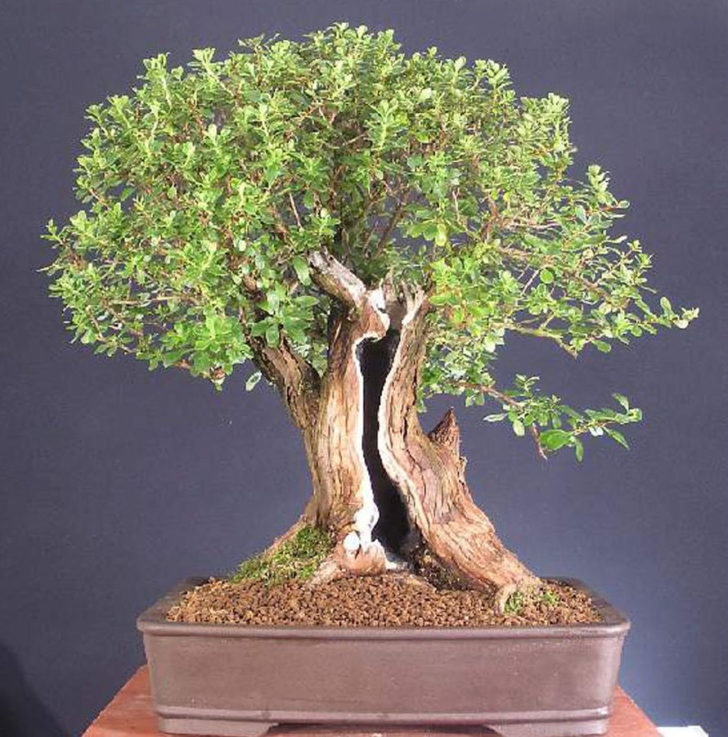
Spectacular bansai in the technique of sabamiki
As part of the sabamika technique, in accordance with the canons of bonsai, it is allowed to use ready-made “blanks” found in nature - trunks split by lightning. Since their height is often very large and does not fit into the bonsai framework, such plants must be cut to an acceptable size, but maintaining the required shape. In the future, it is quite possible to use the sharimika technique to form a tree.
Forming tools
The optimal set for processing and shaping bonsai branches is as follows:
- knife-cutter;
- a set of knives designed for woodcarving;
- small pliers - they are very convenient for removing the bark;
- concave wire cutters (side cutters);
- coarse sandpaper;
- bleach for wood;
- a set of paints of "wooden" shades or wood stains.
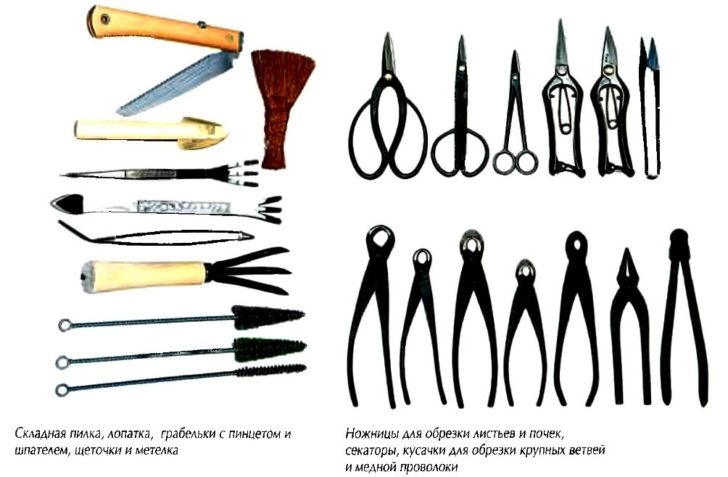
Tools for processing and shaping bonsai branches
To facilitate the work, it is quite possible to use a suitable power tool - but only if you have experience working with it. It is not recommended for beginners to use it - one careless movement can easily ruin many months of work!
back to index ↑How to grow bonsai from seeds at home
There are several methods available to beginner bonsai lovers and allowing you to grow a miniature tree on your own in ordinary home conditions. They do not require special efforts and investments, the main thing here is the presence of artistic taste.
Mise
This is the best option for those who have no experience in growing plants at all. With this method, the plant is grown from seeds collected in the natural habitat of the selected tree. Several "seeds" are planted at the same time, after their germination, the most suitable sprout is selected, from which a bonsai is subsequently formed.
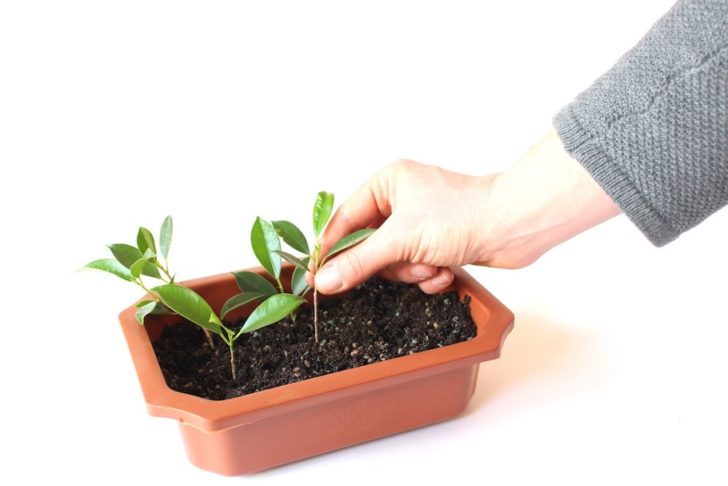
Bonsai mise grown from a sprout
Toriki
In this case, the tree is grown from cuttings or cuttings of the desired plant. The technique is simple, but not suitable for all types of trees. It consists in performing the following simple operations:
- in the lower part of the cutting or layering, near the place of its cut, the bark is slightly trimmed;
- the incision site is treated with a root stimulator;
- the treated area is wrapped in natural moss or its equivalent and wrapped in plastic wrap;
- the stalk prepared in this way is stored for three months in a place with the necessary climatic and temperature conditions.
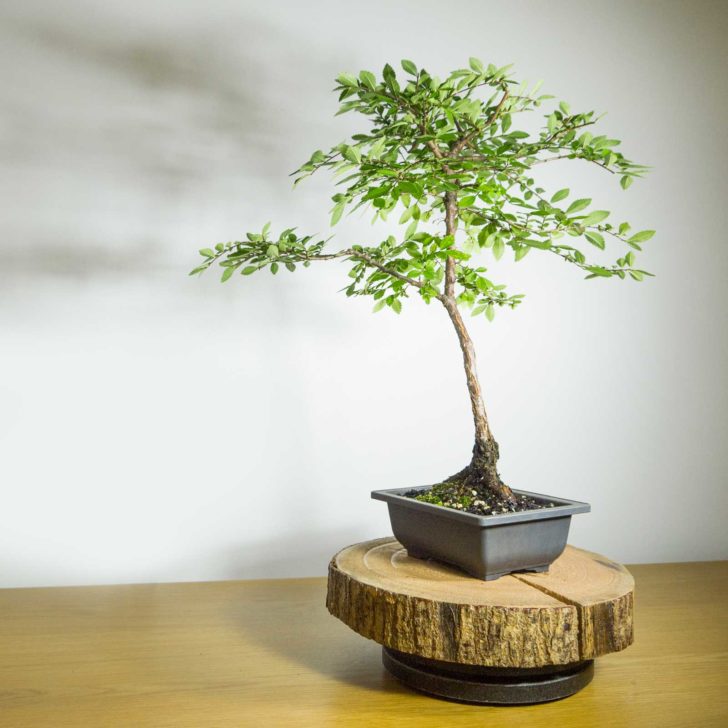
Bonsai toriki grown from cuttings
How to care for such a bonsai at home? During all three months, the "blank" should be watered periodically - it should not dry out in any case.
Yamadori
A method of growing bonsai that allows you not to bother with the germination of seeds. In early spring, a suitable plant is found in nature and is preparing for transplantation - the stem is dug up to the beginning of the root system.Then you need to be patient and wait a couple of months - during this time aerial roots should appear on the bare area. After that, the sprout is dug up (its root system located in the ground is cut off, but within reasonable limits!) And transplanted into a pot. After that, you need to wait until the plant takes root in a new place - this process can also last quite a long time. And only then you can start the formation of bonsai.
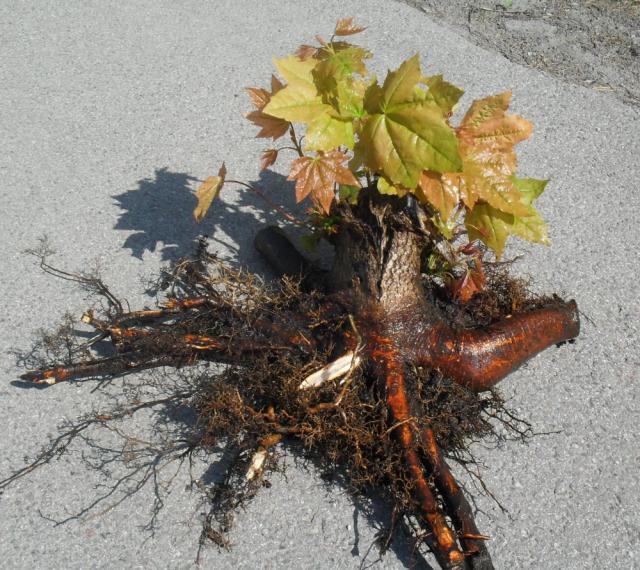
How to grow bonsai yamadori
Weki
A method that allows you to almost immediately begin to form a miniature tree, but requires certain financial investments: a ready-made plant of the required type is purchased in the nursery. It is cut off and planted in a suitable pot.
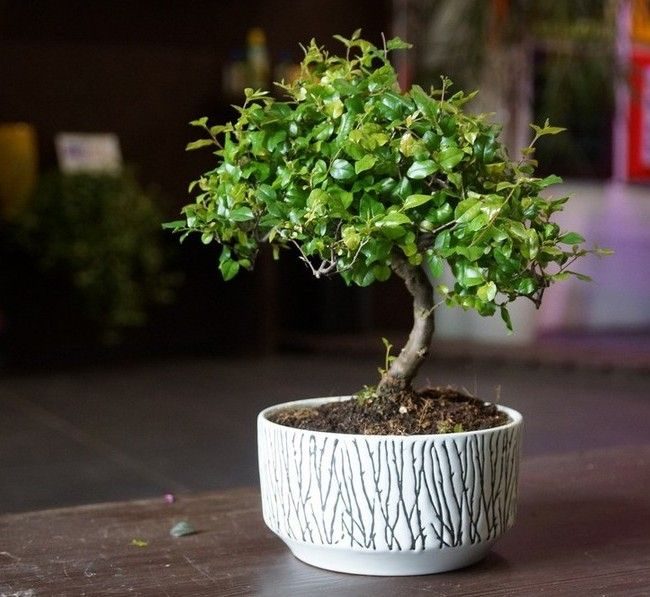
You can buy ready-made bonsai
A variant of this method is to purchase a ready-made bonsai and reshape it in accordance with your ideas.
back to index ↑Pot and soil
The pot, as you know, is "a simple subject" - but not in the science of how to care for bonsai at home. In it, he not only plays the role of a container for a plant, the pot should be an organic and natural detail of the composition as a whole. It is, first of all, about observing the proportions - the optimal ratio of the heights of the pot and the plant is 2: 3, a higher capacity does not fit into the canon. The material of the pot is necessarily well-fired ceramics; to ensure air access to the roots, there must be drainage holes in the bottom.
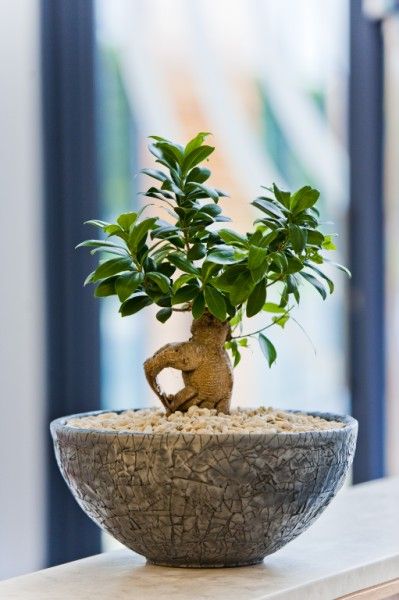
The pot should be an organic part of the composition
The color solution can be any, but always monophonic; this applies to both coniferous and hardwood containers. In the latter case, however, it is not forbidden to use bright colors - especially if the tree is flowering.
The shape of the pot is traditionally chosen oval for single trees and rectangular for cascading, multi-level compositions; the width is chosen a little more than the minimum possible. For multi-stemmed bonsai and plants with a dense crown, pots are selected, on the contrary, with a large width and low height. Roughly speaking - "basins".
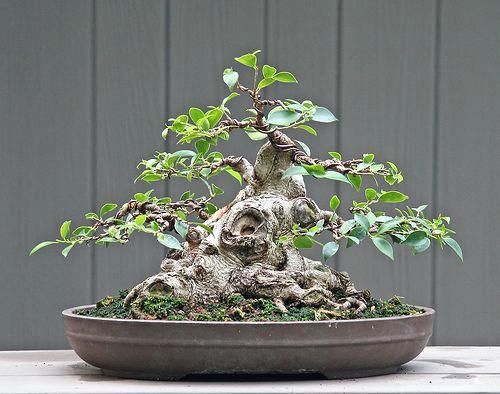
For a single bonsai, the pot is selected in an oval shape.
To ensure proper care of a bonsai tree at home, the soil must necessarily include elements such as sand washed and calcined for disinfection, natural clay and organic components - humus and disinfected peat.
back to index ↑Bonsai care features
Miniature trees grow in conditions that are not the most familiar to them, so they need third-party care throughout their entire lifespan. The rules for caring for bonsai at home are quite simple and not burdensome, but must be observed constantly and strictly - especially for watering and airing..
Lighting and placement
Most indoor plants need supplemental lighting, and bonsai trees are no exception. They need bright light, so do not place anything close to them that could cause shading of the plant. The best location for bonsai is on an east or west window sill. For additional illumination in the autumn-winter period and in cloudy weather, fluorescent lamps or LED phytolamps should be used to eliminate the possibility of overheating of the plant.
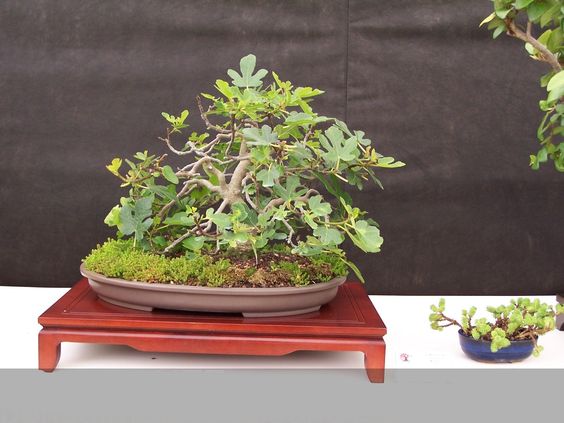
Bonsai needs extra lighting
Temperature and Humidity
The traditional low humidity level for bonsai plants in residential areas is too low ninety-nine times out of a hundred. To create the necessary microclimate, you can place a pot with a plant on a tray filled with water, or at least place an open wide container with water in the immediate vicinity of the composition.The systematic morning spraying of the tree crown is very useful - but at the same time you need to make sure that it has time to dry by sunset.
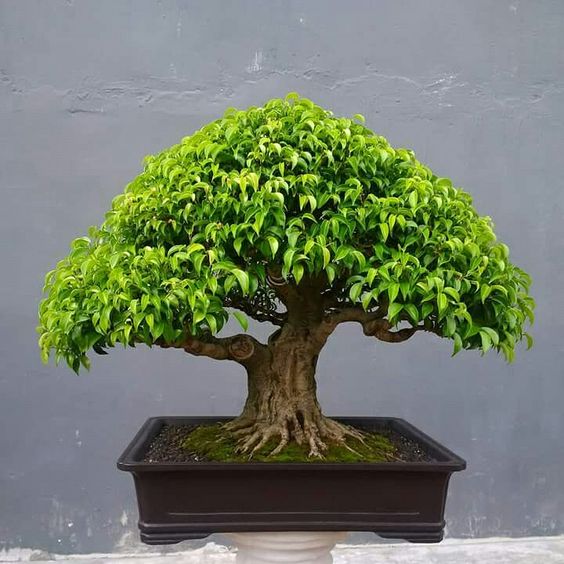
Monitor soil moisture levels
How to care for bonsai at home in winter? At this time of the year, the air temperature on the windowsill (about 20 degrees Celsius) is quite comfortable for tropical bonsai plants, but high for subtropical tree species - 15 degrees is enough for them. For seasonally shedding trees and most conifers, even such a relatively low temperature is too high - for such plants in winter it should not be more than 5 degrees Celsius.
Watering and feeding
Watering should be fairly regular, but waterlogging of the soil is highly undesirable. The earth should be moist throughout the thickness, but not wet. Summer watering is more abundant than winter. It is best to use melted or settled tap water - but always warmed up, especially for tropical and subtropical plants.
Top dressing when caring for bonsai is carried out taking into account the main principle of growing these plants - their growth should be slowed down, and it is complicated by the small volume of the pot. It is necessary to feed the trees - but the dosage must be calculated very carefully. The main input elements are potassium, nitrogen and phosphorus, the proportions are selected in accordance with the type of tree and the conditions of its natural habitat.
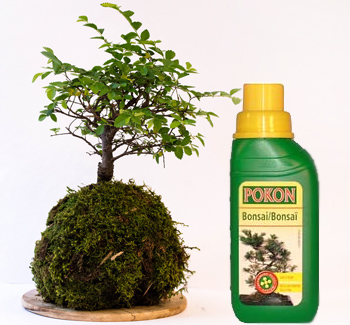
Trees need to be fertilized regularly.
Top dressing begins in the spring, when the growth of the tree is activated, and is carried out monthly until June-July. Then a break is made for one or two months, and with the beginning of autumn, top dressing is resumed and continues until the plant leaves for a dormant period. It is very convenient to carry out top dressing with complex mineral fertilizers - the frequency and volume of its use are usually indicated on the package.
Types of pruning for crown formation
Pruning to create the correct bonsai crown pattern differs from similar operations for ordinary trees only in scale. The same techniques and the same types are used:
- pruning the trunk and large, skeletal branches;
- pruning of branches in order to form the desired volume of the crown;
- cutting out young shoots ("vochkov");
- pinching of shoots, which allows you to control the formation and growth of branches;
- pruning of the root system.
The best pruning time is from early spring to late summer. Evergreens can be pruned all year round. But it should be borne in mind that the very first pruning of a tree sprout can only be done after it has five true leaves.
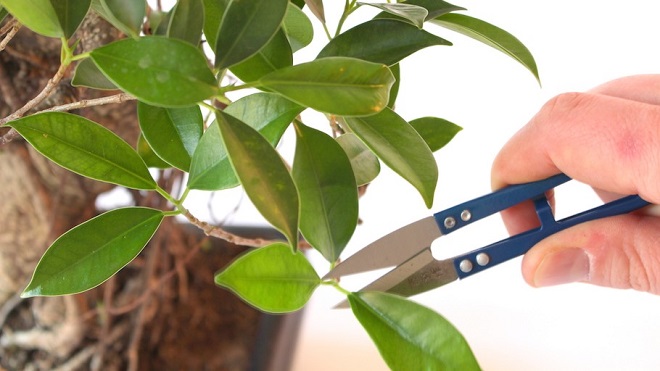
Pruning is done from the beginning of spring to the end of summer.
If signs of disease or pests are found in bonsai plants, immediate action must be taken by treating the trees with appropriate preparations.
back to index ↑Conclusion
Passion for the art of growing bonsai is not just a hobby, it is a real research work that allows you to significantly increase your knowledge in the field of crop production and agricultural technology. And the joy of contemplating a self-grown, elegant and spectacular tree is priceless! When certain skills are achieved and the necessary experience is gained, it is quite possible to monetize your skills.
Photo gallery - bonsai
Video
